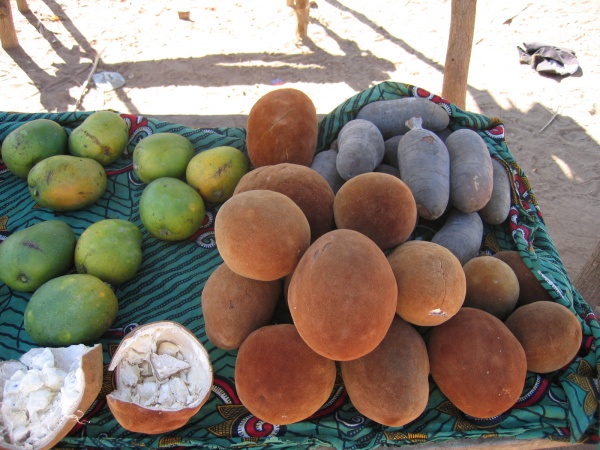Baobab
Products derived from the fruit pulp and seeds of the baobab tree can be used in a variety of food and drinks as well as for cooking and massage oils.
The Baobab name originates from Arabic phrase bu hibab meaning fruit with many seeds. The first botanical description of the baobab was made by French botanist Michel Adanson and a species was later named Adansonia. The sixth and the last Malagasy species was discovered and described in 1960.
Baobabs are found in dry and semi-arid areas which receive less than 500 mm of water per year. They are succulent plants that adapt well to arid environments thanks to their water storage capacity in their thick and swollen trunks which contain up to 80% water.
The baobab only bear leaves in the rainy season and are leafless during the dry season which limits their water loss.
Baobab belong to the Bombacaceae family of trees which includes the Kapok tree. While there are nine species of baobab in the world, six of them are endemic to Madagascar, making the baobab tree symbolic to the big island.
The large flowers of baobab live only for one night and open almost simultaneously for all individuals of the same species. Baobabs are pollinated by moths, bats and bees. Birds such as sunbirds and certain lemurs also visit baobab flowers and can have a modest pollinating activity. The oldest known baobab species (A. rubrustipa) located in the Tsimanampetsotse reserve is believed to be over 1,600 years old.
In baobabs, all the cells are alive. This explains their exceptional healing and regeneration capabilities. Giants tolerate natural or man-made mutilations well and easily regenerate which sometimes gives them astonishing forms.
The fruit contain a dry and chalky pulp with interesting nutritional qualities, pulp, which mixed with water and sugar, constitutes a refreshing and vitamin-rich drink. Baobab seeds are oilseeds, richer in oil than peanuts. Baobab oils contain different fatty acids (palmitic, oleic, linoleic) but also cyclopropenic acids which must be degraded by cooking in order to make edible oil. The seeds are sometimes roasted and used for coffee. In the South, women prepare beauty masks from bark reduced to a paste.
On the Mahafaly plateau, baobabs (A. a) are the subject of a unique practice in the world! Their trunk is hollowed out and the cavities thus formed serve as cisterns. In the rainy season, they are filled with water. These reserves allow men to survive in the dry season in a particularly arid and hostile environment.
For the Sakalava ethnic group, the baobab is a sacred tree. The species A. grandidieri is called "reniala" which means "mother of the forest".
The Sakalava associate the Cistern baobab (A. za) baobab with wild nature and feminine symbolism. Certain sacred baobabs are places of worship dedicated to women and children. The ceremonies, which take place at their foot, focus on the fertility of women, the good health of children or even the fertility of the land, particularly during a symbolic ritual called "fitahan-jaza". A Malagasy legend says that Imbelo, the first man, created woman by carving her from baobab wood. Many other legends are dedicated to baobab.
Fruits containing rich pulp The fruits of baobabs or pods are fleshy, dry, large berries.
The fruits contain several hundred seeds coated in a white, chalky pulp.
It is likely that giant tortoises, the elephant bird (aepyornis) and large lemurs, were good seed dispersers. This role is probably ensured today by animals introduced by man (zebus, goats, bush pigs) or by water which can sometimes transport the fruits and their valuable cargoes of seeds over great distances.
The pulp is very rich in vitamin C and microelements (calcium, potassium, manganese). It has a concentration of vitamin C much higher than that of orange and equivalent to that of kiwi. The fruits can remain on the trees for several months before falling to the ground.
Baobab fruit seeds are bean shaped. Their size and color vary depending on the species.
